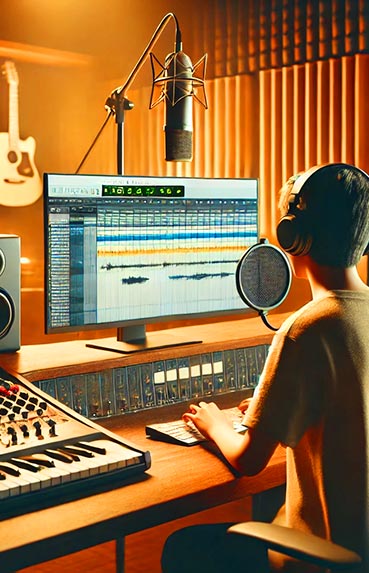In today's digital world, where competition is fierce and user attention is fleeting, optimizing your website's conversion is essential. Visual elements play a crucial role in this process as they can capture attention, communicate information effectively, and guide the user toward the desired action. In this article, we will explore how different visual elements can significantly enhance your website's conversion rate.
The Importance of Visual Elements
Why Are Visual Elements Crucial?
Visual elements are not merely decorative; they are powerful tools that can influence user perception and decisions. According to a study by 3M Corporation, the human brain processes images 60,000 times faster than text. This means that visual elements can communicate ideas and messages more quickly and effectively than textual content.
Impact on User Experience
A positive user experience is key to improving conversion. Well-designed visual elements can make a website more attractive and easier to navigate. This, in turn, can reduce bounce rates and increase the time users spend on your site, which are positive indicators for conversion.
Types of Effective Visual Elements
High-Quality Images
High-quality images are essential for conveying professionalism and trust. A poorly made or low-resolution image can give a negative impression of your brand. For instance, a study by MDG Advertising revealed that 67% of consumers consider clear and detailed images very important when making purchasing decisions.
Practical Tips:
- Use original images and avoid stock clichés.
- Ensure images are relevant to the content.
- Optimize images for the web to improve loading times.
Interactive Videos
Video content is one of the most effective ways to capture attention. A report by Wyzowl found that 84% of people have been convinced to buy a product or service after watching a brand's video. Videos are not only engaging but can also explain complex concepts simply.
Concrete Examples:
- Include product demonstration videos on product pages.
- Use testimonial videos to boost credibility.
Infographics
Infographics are visual tools that combine graphics and information clearly and concisely. They are especially useful for presenting complex data in an easily understandable way. In fact, infographics can increase web traffic by 12%, according to a study by Demand Gen Report.
How to Create Effective Infographics:
- Use a clean and professional design.
- Include accurate and updated data.
- Ensure the information is relevant to your audience.
User Interface (UI) Design
Strategic Use of Color
Color has a significant psychological impact on user behavior. According to a Kissmetrics study, 85% of consumers state that color is one of the primary reasons they buy a particular product.
Color Strategies:
- Use colors that reflect your brand identity.
- Implement contrasting colors to highlight calls to action.
- Ensure the color scheme is consistent throughout the site.
Typography
Typography affects not only the aesthetics of your site but also its readability and accessibility. A good typographic choice can enhance user experience and guide them toward conversion.
Tips for Effective Typography:
- Choose readable fonts appropriate for your audience.
- Limit the use of different fonts to maintain consistency.
- Ensure font size is suitable for all devices.
Typography, when used correctly, can be a powerful weapon to guide the user through an engaging and functional visual journey.
Interactive Elements
Calls to Action (CTAs)
Calls to action are crucial for guiding the user toward conversion. An effective CTA must be clear, visible, and attractive.
Examples of Effective CTAs:
- "Buy Now" buttons with a color that contrasts with the background.
- Subscription forms that stand out with minimalist design.
Animations and Transitions
Subtle animations can enhance the user experience by making navigation smoother. However, it's important not to overuse them as they can become distracting.
How to Implement Animations:
- Use animations to direct attention to important elements.
- Ensure animations do not slow down the site's loading time.
Continuous Evaluation and Optimization
A/B Testing
A/B testing is fundamental for identifying which visual elements work best. These tests allow you to compare two versions of a page to determine which performs better in terms of conversion.
How to Conduct A/B Tests:
- Change one element at a time for clear results.
- Analyze the obtained data to make informed decisions.
User Behavior Analysis
Analyzing user behavior can provide valuable insights into how visitors interact with your site. Tools like Google Analytics and Hotjar can help you identify areas for improvement.
Analysis Strategies:
- Study heat maps to see where users click.
- Analyze navigation paths to optimize user flow.
Success Stories
Case Study: Company X
Company X achieved a 30% increase in conversion rate by implementing strategic visual changes. By improving image quality, optimizing color use, and simplifying navigation, they were able to capture more potential customers.
Lessons Learned
- Visual consistency is key: Maintaining a consistent design helps establish trust and professionalism.
- Personalization is powerful: Adapting visual elements to user preferences can significantly improve conversion.
Visual elements are an integral part of a website's success in terms of conversion. By understanding their impact and applying effective strategies, you can enhance the user experience and ultimately increase your website's conversion rates.

















